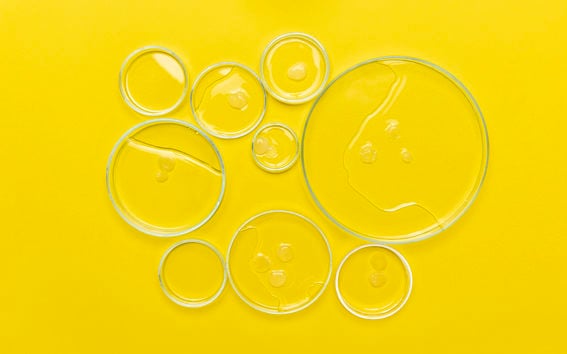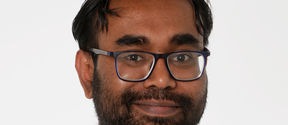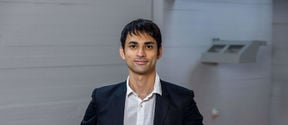Artificial human tissues and nature’s super coatings – the materials exhibition that took Slush by storm is now coming to Otaniemi

Bacterial cellulose is a promising material for different kinds of medical applications, such as implants and surgical dressings. Photo: Aalto University / Aleksi Poutanen
Time: 23 January – 3 March 2019. Opening ceremony at 14.00 on 23 January
Location: Dipoli (Dipoli Gallery), Otakaari 24, Espoo.
The ‘Materials Matter’ exhibition presents ten fascinating materials research projects which open up new possibilities in areas such as sustainable development, climate change prevention, and health technology:
- What if we could 3D print custom bone implants? An implant made from a porous combination of biopolymers and bioactive ceramic supports the growth of new bone in a patient and gradually disintegrates as the new bone develops.
- What if an old T-shirt could be turned into new textile fibre? Using the Ioncell technique, high quality textile fibre can be produced from recycled textiles as well as from cardboard and paper.
- What if bacteria were used to grow artificial human tissues? Bacteria are one of nature’s most durable organisms, and they can be harnessed for the production of different kinds of materials. One of the most interesting is bacterial cellulose, which is a promising material for different kinds of medical applications, such as implants and surgical dressings.
- What if wood could protect metal surfaces? An environmentally friendly coating manufactured from lignin, a by-product of the cellulose and paper industries, could increase the rust resistance of metals by a hundred times.
The use of biomass is a unifying factor for many of the exhibition’s projects. Biomaterials research has long been one of the strengths of Aalto University, and the FinnCERES innovation ecosystem accelerates research even further. The objective of FinnCERES is to generate 300 inventions in the bioeconomy sector, 80 new products or services, and 8 startups in eight years. According to calculations made by VTT Technical Research Centre of Finland, the value of forest and agricultural biomass in Finland can be doubled by 2050 if it is used for the manufacture of products of high added value.
Among the research projects being presented in the exhibition are examples both of new creative research as well as projects that are already close to the commercialisation stage. At the exhibition opening, there is also the opportunity to talk with the researchers.
In Dipoli, you can also admire the Ioncell dress worn by Finland’s First Lady Jenni Haukio at the Independence Day Reception.
We look forward to seeing you there!
Further information:
Heidi Henrickson
Materials Platform Manager
[email protected]
- Published:
- Updated:
Read more news

Broadband miniaturized spectrometer research receives QTF annual discovery award 2024
The clarity and compelling presentation of the research were one of the reasons why Doctoral Researcher Md Uddin earned the prize for the research paper, which was published in Nature Communications.
Robotics needs safe behavior patterns
Robotics and autonomous systems are developing rapidly. Algorithms that withstand disturbances and uncertainties in the system model and environment are critical for development.